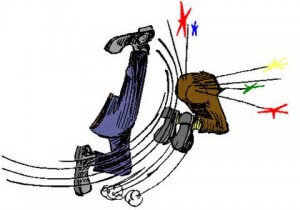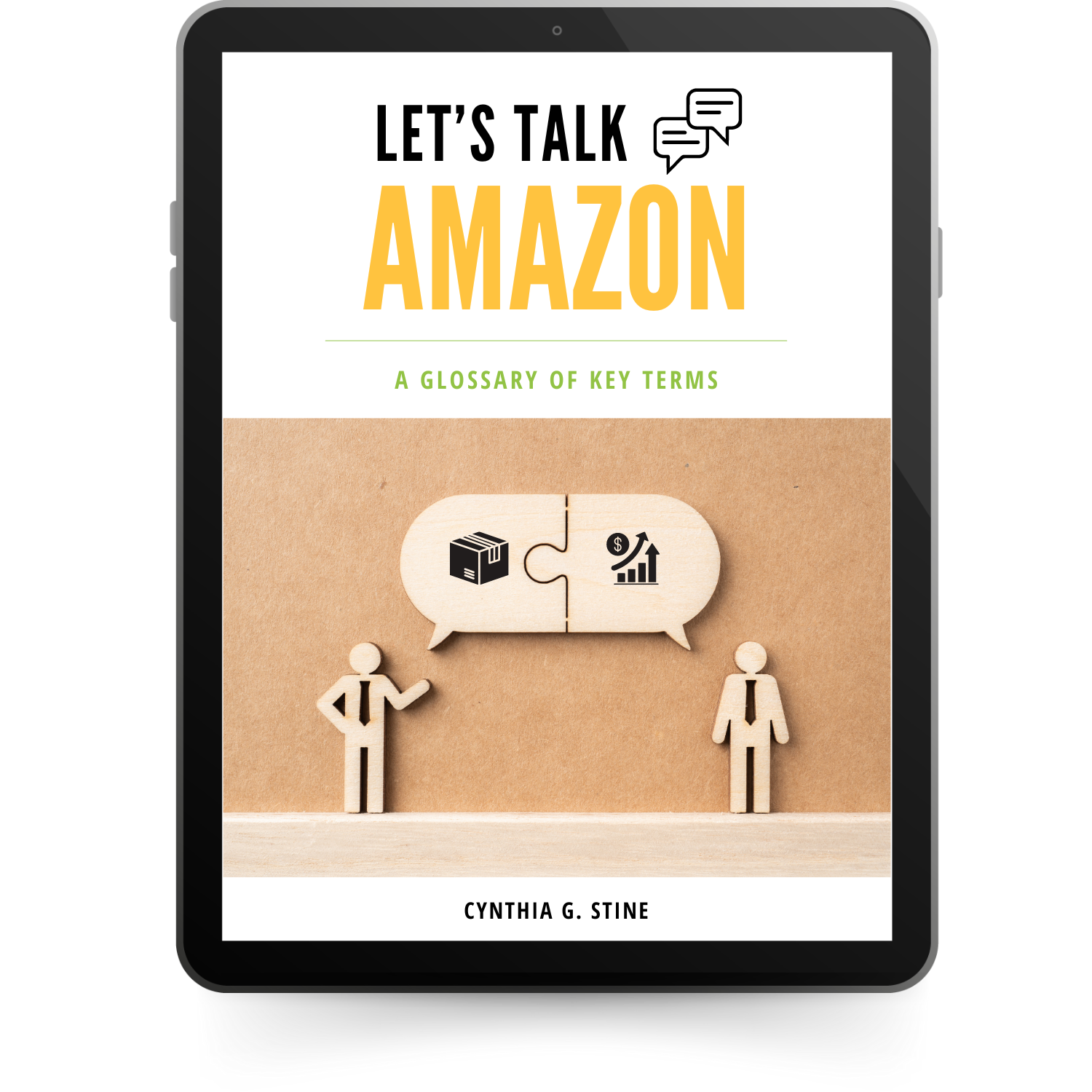This blog was republished 05 June 2020
My blog topic a few weeks ago about staying out of trouble with Amazon stirred up a real hornet’s nest of interest among sellers. I wasn’t aware how many people have suffered in silence, basically. It is the problem no one wants to admit having. I think of it as the Amazon “social disease.” I have been busy helping sellers get reinstated (yay!) and there are some questions and issues that weren’t covered (or covered well enough) in the previous article that I thought might be helpful to the community if I covered them.
Just as an overview let me say that I’m not happy with how Amazon is handling certain issues regarding authorization, claims by competitors and so-called counterfeit. It is enormously frustrating to my clients that the seller performance team seemingly doesn’t do nuance and can’t see what is really going on or forgets from day to day what has already been decided. One client has been suspended multiple times for the same ASIN even though he has official permission to sell it on Amazon.com. He’s not willing to let it go because it is a $1M per year line of business. He provides proof, gets reinstated and then is suspended again. It is frustrating to him.
Q. Why Can’t I Sell This Item On Amazon?

For the most part, we are able to sell on Amazon through the “first sale doctrine” in both trademark and copyright law that bars the brand owner from controlling the downstream sales. As long as the product is unchanged from its original form, we can sell it and are protected by that. However, there is an exception called the “material difference” exception. Almost anyone who has gotten an Amazon form letter lately suspending them or banning them from selling on Amazon and/or selling a particular ASIN on listing has seen that phrase in the letter. This is a legal matter and Amazon is not going to get involved beyond complying. Courts define “material difference” broadly. It is virtually ANY difference that exists between the authorized goods and unauthorized goods that a consumer would consider relevant in buying the product. Even subtle differences like different instruction manuals apply or a missing seal on the box. Seriously. A seal on the box.
For those who enjoy reading articles by lawyers, here’s an excellent one to look at about dealing with unauthorized online dealers.
Related to this issue is copyright infringement such as using pictures, copy, logos, etc. created by the manufacturer. You cannot use their pictures descriptions or logos without express, written permission. That is the kind of thing they give their authorized distributors, dealers and resellers. Even if you did not create the listing, you could still get in trouble for selling on a listing that is riddled with copyright infringement. Usually when this is the problem, Amazon will suspend the listing and request the listing be fixed by those who are using it. However, if you have a bunch of listings with copyright infringements or you are the one who created the listing, they can suspend you for policy violation.
There are certain brands who have told Amazon that anyone who is not buying directly from them is selling counterfeit. You see this with a lot of high end brands of jewelry, clothes, handbags, etc. Amazon adds those brands to its restricted list and won’t let anyone sell on them except the manufacturer or the manufacturer’s approved representative. This is why you will see Jones of New York on Amazon – they have their own store – but you can’t sell Jones of New York on Amazon.
No, they don’t provide a list of restricted brands. That would be so helpful. However, if you are using the Amazon Seller App (not the regular app but the seller app) and you look up a suspected product there, they will tell you if you are restricted from selling it. Sometimes you are restricted because you aren’t approved in a category, other times it is because it is a restricted brand. [Android or iPhone app]
Q. I’m An Authorized Reseller. Why Am I Getting Kicked Off This ASIN?

Some of my clients ARE authorized resellers (not distributors mind you, but resellers) and the official letter from the company welcoming them into the reseller program was enough to get them reinstated. Others are getting their goods from an authorized distributor BUT are still getting suspended. What’s going on in this case?
This could be an issue of material difference where my client has made some kind of change – no matter how subtle – to the product or it could be that they are not allowed to resell on Amazon.com. Some of the manufacturers set up territories with their distributors and resellers. If they give Amazon a list of allowed resellers and you aren’t on the list, you could be out of there. If manufacturers are cracking down on unauthorized online dealers, then you could be caught up in the whirlwind.
Another possibility is that your product is old. If the manufacturer is selling with new packaging, then your old product cannot be listed under the new listing. Your picture MUST match your box and description exactly.
Other possibilities include a competitor who is either reporting you as selling inauthentic or materially different product, or customers who are confused by your product (happens less frequently). The things I have seen sellers do to each other recently are very unpleasant. And here’s what you NEED to know: Amazon doesn’t give a damn and they are going to act.
Next, I’ve seen a seller who was screwed by his authorized distributor that was improperly repackaging returns and selling them as new. The repackages were mixed in with new and my client couldn’t understand why customers were complaining that their products weren’t new. He suspected an unscrupulous competitor was out to get him, not the distributor. Luckily for him, the manufacturer notified him that they had banned that distributor and why. That letter allowed my client to be reinstated.
Q. Is It The Manufacturer That Is Coming After Me?
No. If the rights owner makes a complaint they’ll do it against everyone on the listing (or at least the other unauthorized resellers) AND Amazon will tell you in the form letter. They’ll even tell you how to contact the rights holder so you can talk with them about getting authorized. Often, they will give you a warning/notice first and suspend the listing rather than suspend you.
Q. I Got A Warning And Listing Suspension About An ASIN And Am Not Going To Sell On It Any More. Do I Need To Do Anything About It Or Just Move On And Sin No More?
My advice is to respond to the listing suspension and tell them you are not going to sell on it any more – and here’s why: small problems add up. If they don’t think you are responsive to their warnings, they’ll get the big stick next time. You become a repeat offender without meaning to. In my opinion, you should respond every time they notify you of a policy violation of any kind even if they are not currently punishing you for it. If you should get in trouble down the road, you can pull up your emails to them that show what a responsive, obedient and helpful third-party seller you are.
Q. Why Did I Get Suspended For Asking A Question?
I’ve seen this twice in the past two weeks and it is very disturbing. My clients asked Amazon for permission to sell a previously restricted or disputed ASIN now that they had paperwork to prove they were authorized. They were both suspended. Not because they listed against the ASIN but because they askedif they could. While we speculated on what happened, the fact is we have no idea. Amazon only sent the form letter. It made it very hard to respond. For one of my clients he was getting permission to sell variations of a product. He got permission for red, black, green and was suspended when he asked about navy.
Unfortunately, when you are suspended or banned you can’t speak to a person at Amazon about this situation.
Assuming you can get reinstated, my only suggestion for avoiding this issue is to let it go if you can. If you’ve had trouble with an ASIN, you may have trouble with it forever. I don’t know if it is an algorithm thing that pops up again and again or what. So much of what Amazon does is automated – including suspensions. Ask yourself if it is worth losing your right to sell on Amazon? Is there another product you can source that will be as profitable and less problematic? My clients often want me to explain to Amazon and “make them see” that they are wrong and my client is right (basically). This is a losing proposition for the seller in my opinion.
Q. Where Are These Counterfeit Or “Does Not Match The Description” Claims Coming From?

In this answer, I’m assuming that your product DOES match the description exactly. This is ostensibly from customers who complain to Amazon but my experience is that it is usually unscrupulous sellers who are buying your product, returning it and claiming it didn’t match the description. To some degree, Amazon will allow this without coming down on you. They know as we know that buyers sometimes lie about their returns so they can get free shipping back to Amazon. However, if it happens more than once in a short period of time on an ASIN, they pay attention. If the claim is that the product is counterfeit, they’ll suspend the listing to look into it. They’ll look at your inventory in the warehouse and at the returned products.
Depending on what you are selling, Amazon itself might be the entity buying your product. They do this regularly with products that have a high degree of counterfeit issues like fine jewelry and electronics.
Q. Is Generic Counterfeit?
YES! If your product does not match the listing EXACTLY then your product is improperly listed at the best and counterfeit at the worst. It doesn’t matter if it is the “same” thing. In Amazon’s world it isn’t. Examples of this that I’ve seen include cables, USB hubs, batteries and so on. It doesn’t matter if the generic cable is the exact same as the brand cable. If the brand is what is listed, you better be selling the brand.
Q. What If You Describe The Difference In The Notes? I See This Often In Books And Collectible Games Where Someone Might Say “Paperback” Under A Hardcover Listing Or “Missing Instructions” Under A Collectible Game Listing. Sometimes A Disc/CD/DVD Is Missing That Was Included With The Original.
It is still a policy violation. When you sell a collectible or used product on Amazon it must still have all the parts and pieces. It must be complete. This includes used textbooks that came with a CD/DVD; kids’ books that had a song CD – all of these MUST be included or you can’t sell it. I have seen people lose their selling privileges over simple mistakes like this. Amazon takes it very seriously. Once again, they get caught by “materially different” claims from their customers.

Q. If I’m Banned, Can I Still Get Reinstated?
Maybe. I’ve successfully gotten several banned clients reinstated. It is harder than suspensions because at this point you’ve blown your appeal. The form letter will tell you that they are not going to listen to you or read any of your future appeals. I look at it as being like an appeal after the jury has found you guilty. If there is new evidence or a new case to be made, it is worth trying. They may also ignore your first appeal. With persistence and a good story it is sometimes possible to get someone at Amazon to look at the new appeal.
Q. How Long Does It Take To Get Reinstated?
I’ve had it happen in less than 24 hours and then I’ve had cases where it has taken weeks of persistent effort to get someone to look at it. As I’ve said before, coming back from being banned is harder than suspension. Right now, however, I have a suspension that has taken more than a week. We aren’t giving up, but it is puzzling.
Q. Should I Fly Out To Amazon?
I’ve heard stories of sellers who have done that, but they were stories. I haven’t talked to a person yet who actually did it. I will tell you that the corporate headquarters is huge. You may want to call first and see if you can make an appointment with someone (can’t hurt). Check out this story to get a feeling of how big their HQ actually is. You won’t want to just wander around.
Q. Can I Write Jeff Bezos?

Yes. He has staff that reads all his emails and routes them. He even reads some of them himself. Will it do any good? I don’t know. I haven’t tried it yet. So far I’ve been able to get people reinstated without writing the CEO. If I were to write him, I would avoid finger pointing, blame and bad-mouthing his staff. Use bullets, keep it simple. If you have a complex issue, write and rewrite the letter until you can articulate it in only a few sentences. Prioritize your issues. Make it simple for a decision to be made. Make sure you try all the Amazon approved routes of communication first and mention that in your letter to him.
The few people I’ve talked to who have tried writing Bezos had mixed results. Some never heard anything, some got calls or emails back from someone else at Amazon. It can’t hurt, but I would try all other avenues first.
Q. Is There Anyone Else I Can Write To At Amazon?
Yes. That is part of why people hire me. I will do everything I know to do to get them reinstated.
Q. If I Register My Private Label Brand And Products In Amazon’s Brand Registry Can I Keep Others From Selling On It?
No. However, what you can do is keep people from changing the listing. You will have complete control over the listing, pictures, etc. If someone lists on your Private Label listing, you can order a unit and see if it is exactly the same as yours. If they are copying your brand, packaging, etc., that is copyright infringement and you can inform Amazon about that (assuming you have protected your intellectual property). If they have the product but not your branding, packaging, etc., then their product is materially different from the listing and you can talk to Amazon about that. [Be sure to include a picture in your listing of the packaging as well as the product.]
Q. Should I Try To Open Up Another Account?
CHECK OUT OUR APRIL 2020 UPDATE ON THIS TOPIC
No. I have talked with (e-chatted?) some sellers – real people vs legends – who have done this successfully. It apparently involves a lot of deceit and technology trickery because Amazon has a robust system for sniffing out people who try to do this. I do not recommend this and will not participate in it. Amazon forbids it.
CONCLUSION
There are a lot of fine points about policy violations. If you get in trouble over an ASIN once, you may not want to ever list on it again and delete it from your inventory. You might get dinged for it again and again. It is up to you but just be aware of what might happen. Being banned is not always the end of the story, but you need to have a better story than the one you used in your appeal.
As I noted in my last blog post on this topic, my clients are honest sellers who made a mistake. They were unaware that what they were doing was wrong, they missed the notification or they weren’t paying attention in some other way. It can happen to the best of us. This should not be a shameful topic that can’t be talked about. We all make mistakes sometimes. If you are suspended or banned, the focus must be on fixing the problem that got you in that situation and making sure it doesn’t happen again. If you have already been banned, you may still have a chance to come back.




